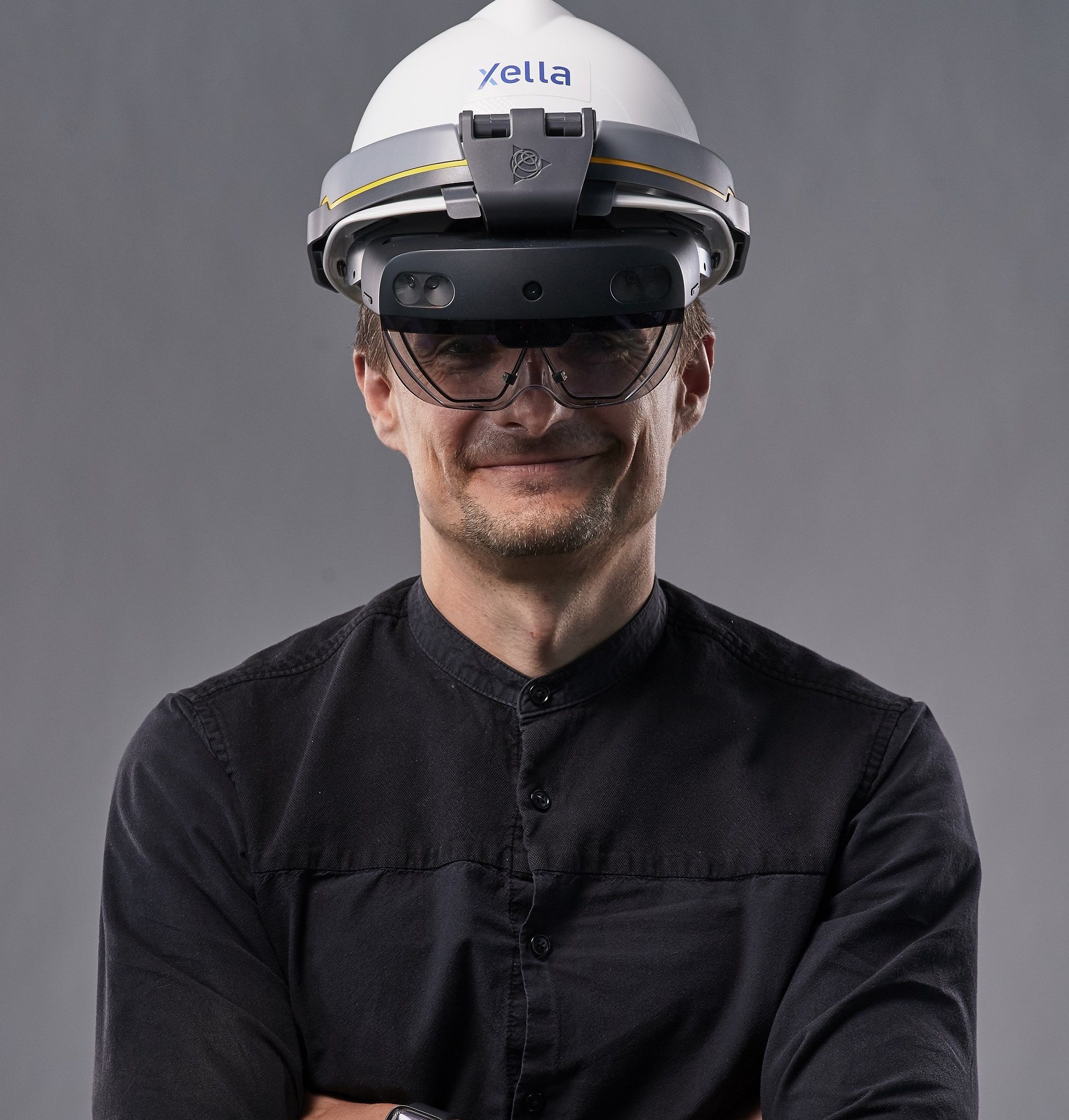Was Digitalisierungsprojekte begünstigt
Und es gibt einige Faktoren, die diese Entwicklung beschleunigen: der allgegenwärtige Arbeitskräfte- und Fachkräftemangel, das zunehmende Bedürfnis nach größtmöglicher Effizienz auf der Baustelle. „Der Wunsch von Kundinnen und Kunden, möglichst schnell zu bauen, erfordert irgendwann den Switch mit größeren Formaten zu bauen, die man dann nicht mehr mit der Hand montieren kann, sondern die Hilfe eines Mini-Krans erfordert“, nennt Radischewski einen weiteren Grund.
Genau diese Umstände machen digitale Planung mit Hilfe von blue.sprint für Kundinnen und Kunden so interessant: Schon in der Planungsphase ordnet das virtuelle Modell allen Bauteilen Kosten und Bearbeitungszeiten zu. Mit diesem „digitalen Zwilling“ können sie alle wichtigen Parameter und Eigenschaften langfristig abrufen. Wann welche Bauteile auf die Baustelle geliefert werden, wird ebenfalls bereits im Modell festgehalten. „Für den Kunden bedeutet das weniger Planungsaufwand und damit geringere Kosten.“
Digitalisierung gelingt dezentral
Kein Wunder, dass das Interesse an der Projektplanung mit blue.sprint zunimmt: „Wir haben immer mehr Großkunden, die Wert auf digitale Planung legen. Damit gewinnt der Kunde Zeit, also einen weiteren Mehrwert.“ Radischewski weiß aus eigener Erfahrung, was Bauherren wirklich benötigen: Vor seiner Zeit bei Xella war er Planungsleiter für Großbauprojekte einer internationalen Planungsgesellschaft.
Als Teil des zentralen Digitalisierungsteams unterstützt er Kolleginnen und Kollegen dort, wo Digitalisierungsprojekte stattfinden: in den einzelnen Standorten. Doch nicht nur das: Das Team sorgt auch dafür, dass die Vorteile von Digitalisierung bekannt werden und die jeweiligen Standorte eigene Expertise aufbauen. „Für uns ist das ist ein fortlaufender Prozess, den wir eng begleiten: Unser Team versucht bei allen internen Sales-Veranstaltungen dabei zu sein, wir veranstalten Webinare und BIM ist immer Bestandteil von Onboardings.“ Digitalisierung muss an den Standorten greifen, so Radischewski. BIM-Experten vor Ort seien dafür dringend erforderlich.
Geringerer Aufwand, niedrige Kosten – für alle Gebäudetypen
Ein wichtiges Argument, um Mitarbeiter an den verschiedenen Standorten davon zu überzeugen, digitale Bauprojekte Kundinnenund Kunden anzubieten, ist: „Wir können kostengünstiger und schneller bauen. Die Materialkosten sind ja das eine, aber viele vergessen die anderen Faktoren: Die Baudauer, die Zahl der Beschäftigten auf der Baustelle. Wer hier digital effizient plant, spart richtig Geld.“ So habe kürzlich auch eine Studie der Universität in Bielefeld nachgewiesen, dass durch die hohe Geschwindigkeit und Effizienz bei BIM-Projekten erhebliche Kosten eingespart werden können. Qualitätsgarantie gibt’s auch beim Material: „Wir können großformatige Steine anbieten, die schon vorgesägt sind und die man ohne Fehler verbauen kann.“
Auch Einfamilienhäuser lassen sich digital planen
Bis hin zum kompletten Siedlungsbau hat Radischewski mit blue.sprint schon die unterschiedlichsten Projekte begleitet: „Die erste Kundenfrage ist oft: Können wir auch Einfamilienhäuser bei euch planen? Das geht natürlich, aber es ist sinnvoller, wenn es sich dabei um Typenhäuser handelt, die also öfters gebaut werden.“ Generell betreffe das alle vorstellbaren Gebäudetypen, etwa Kindergärten, Krankenhäuser oder Wohnheime für Studierende.
Der Kundennutzen zeigt sich immer besonders bei eng getakteten Bauvorhaben. Beispiel: Der Bau des Marissa-Ferienpark in Niedersachsen, den Xella begleitete: 253 freistehende Ferienhäuser sowie 216 Wohneinheiten in 36 Apartmenthäusern entstanden durch blue.sprint-Planung in nur zweieinhalb Jahren – nur eine Woche Bauzeit blieb hier pro Rohbau. Der Kunde zeigt sich nach der Fertigstellung überzeugt: „Ein zweiter Ferienpark mit BIM-Planung ist bereits vereinbart.“
„Ganz ohne Menschen wird es nicht gehen!“
Wenn es darum geht, die Effizienz auf der Baustelle noch weiter zu steigern, wird Radischewski immer wieder auf die Zukunftsvision einer menschenlosen Baustelle angesprochen. Doch die rechtliche Lage in vielen Ländern erschwert diese Entwicklung momentan noch. Solange ein Roboter auf der Baustelle zugange ist, darf kein Mensch anwesend sein. Erst in zehn Jahren sieht Radischewski eine flächendeckende Verbreitung künstlicher Intelligenz auf Baustellen – und hat auch dann noch Bedenken: „Auch eine Maschine hat Ausfälle. Ganz ohne Menschen wird es nicht gehen!“
Digitalisierung heißt auch bei Xella ständiger Wandel. So stehen auch bei blue.sprint Weiterentwicklungen an: „Wir planen eine einheitliche Software mit Kunden-Cloud, zum Abrufen der 3D-Modelle soll ein QR-Code bald Standard sein. Außerdem arbeiten wir an einem 3D-Scanning für Baustellen – so muss der Kunde die Gebäude nicht mehr per Hand aufzeichnen, sondern kann sie bequem scannen.“
